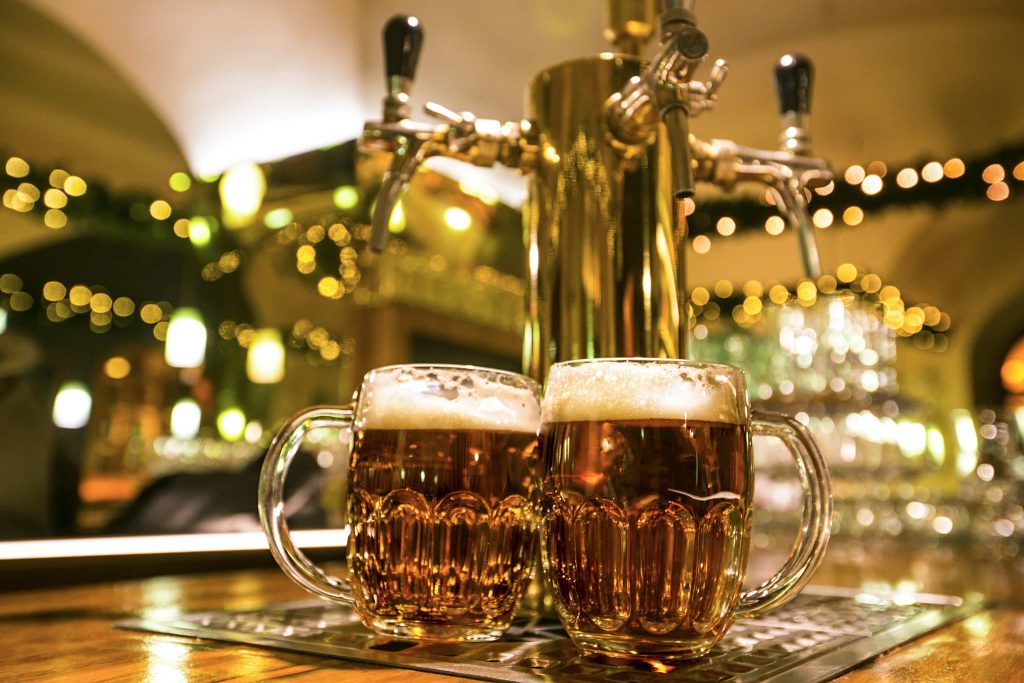Czech breweries seem to have had a good summer. July sales were up 2% compared to last year’s record, with over 33,000 more hectoliters more beer produced than at the same time last year. Exports helped to drive the figures, as well as moderate weather.
When is it too cold people drink less, and when it is too warm they turn to lighter beverages such as radlers and soft drinks. Full statistics for the summer will be available at the end of September, according to the Czech Union of Breweries and Malthouses (ČSPS).
And while most
people’s focus is now on wine festivals, beer will be celebrated in
pubs across Prague and rest of the Czech Republic on Czech Beer Days
(Dní českého piva), held September 24–30, which coincides with
St Wenceslas Day on September 28. He is considered the patron of
beer.

The idea behind the
celebration is to get people back into pubs for the social aspect of
drinking.
Compared to last
year, more beer is being consumed in pubs and at home, while
restaurants are losing their share. But overall, more than 60 percent
of all Czech beer consumption takes place at home.
Light-colored beer still dominates production, while dark and semi-dark beers make up less than 4 percent of the market.
Demand for beer in
plastic (PET) bottles fell by 13.5% percent compared to last July.
“Breweries try to behave in an environmentally friendly way, and
they limit them,” ČSPS Executive Director Martina Ferencová said
at a press conference.
Sales of beer in
glass bottles was up 2.5%, and sales in kegs was up 3%. Interest in
mini-kegs, popular last season, turned out to be a fad. Sales dropped
some 40% compared to last year. Consumers may have switched to larger
barrels. “Breweries do not only offer 50 liter kegs, but also 30
liter and 15 liter kegs,” Ferencová said.
Easy manual work with electronics - start 8th Jan


Interest in cans is
also on the rise. “The package is convenient, it cools quickly, it
is not heavy, and it does not have to be returned,” Ferencová
said. People often buy beer in cans for traveling. “We found that
more than a third of cans end up abroad,” she said.
Consumers are also
being more responsible, and the older hard-drinking generation is
dying out. “Drinkers who drank their 10 beers daily do not exist
anymore. Most people enjoy beer in a reasonable degree,” Ferencová
added.
Another current trend is increased interest in lagers (11°–12.99°) at the expense of weaker draft beers (8°–10.99°). Degrees mark the amount of malt sugar in the brewing process, and are not to be confused with percentage of alcohol content. Higher degree beers do have higher alcohol, though. A 10° beer is on average 4% alcohol and a 12° beer is closer to 5%. there is also increased interest in non-alcoholic beers.
According to the Czech Statistical Office (ČSÚ), in 1927 beer production in the then-Czechoslovakia was 10 million hectoliters. The average consumption per person then was 105.8 liters of beer. Last year, total production exceeded 21 million hectoliters, while the average Czech, including children, drank 144.3 liters of beer, to most any country per capita in the world.Czechs are also among the largest consumers of alcohol overall and largest spenders.












 Reading time: 2 minutes
Reading time: 2 minutes 

 German
German
 French
French
 Spanish
Spanish
 Polish
Polish
 Finnish
Finnish





















